By Dan Weisz
From an article in the January 2014 Tucson Weekly:
Desert bighorn sheep have roamed the American Southwest for tens of thousands of years—from what is now Mexico into Arizona and Nevada, through southern New Mexico and western Texas. In the 1800s, large populations lived in nearly all the mountainous regions of Arizona. As settlers moved in, the number of bighorns declined. Two national wildlife refuges—Kofa and Cabeza Prieta—were established in 1939, providing 1.5 million acres in southwestern Arizona for the bighorn sheep as well as other wildlife. About 900 bighorns still live in these two refuges. By the early 1990s, however, their range elsewhere in the state had been reduced to the Grand Canyon and a few other remote areas. Today, the desert bighorn sheep again occupy many of their historical sites in Arizona because of relocation projects implemented by Arizona Game and Fish. More than 5,000 sheep now live throughout the state.
In 2013, Arizona Game and Fish reintroduced Bighorn to the Catalinas, north of Tucson with releases near Catalina State Park on the north west side of the mountains, below their old range of the Pusch Ridge Wilderness Area. Over the past few years, there have been may sightings of the sheep all across the range. They were in this section of the mountain range and relatively close to homes in the Foothills. To read more about this program, see https://www.tucsonweekly.com/tucson/rebalancing-nature/Content?oid=3941330
I recently saw the sheep in this area. I was able to learn some history about some of the sheep I saw through emails to and from Arizona Game and Fish.
One of the first sheep I saw was this ewe. “Blue 25” was an adult ewe captured in the Trigo Mountains, north of the Kofa National Wildlife Refuge, in 2013. She was part of the first group transplanted to the Catalinas. The Kofa NWR is east and north of Yuma. All of the adult sheep are outfitted with collars when they are released to allow for satelite tracking of the sheep across the mountains. The collars are designed to fall off after a few years.
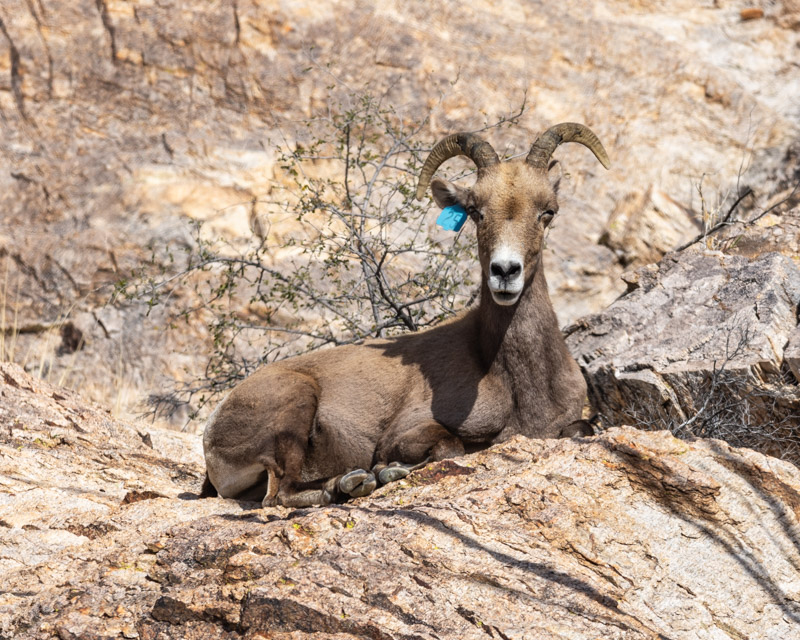
A bit later, she was standing and showing her profile. I asked Game and Fish about this tagged sheep not having a collar. Their response was: “The 2013 collars were supposed to drop off in January of 2016. 2014-Feb 2018, 2015-Nov 2018, 2016-Nov 2019. Sometimes the drop-off mechanism fails, and the collar stays on the sheep. I know we have a blue eartagged sheep still wearing a collar, for example, because we saw her on survey this year.”
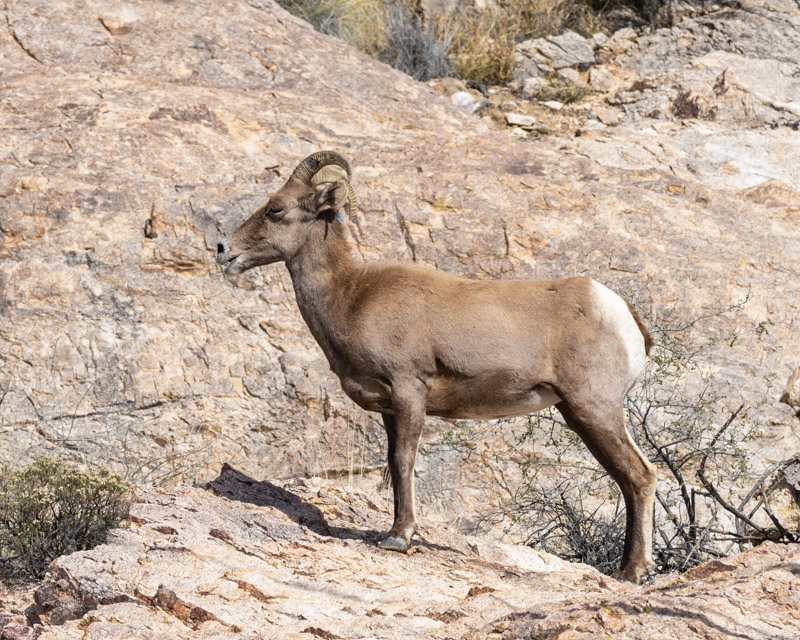
A group of three rams were resting nearby. Only one had ear tags. From Game and Fish: “This guy was a lamb when captured in 2015 in the Middle Mountains, so he never had a collar, just ear tags. The other two were either born in these mountains, or had ear tags that got ripped out. If they were REALLY big, they could possibly have migrated to the Catalinas from another mountain range, but we have not been able to confirm that. Most of the uncollared/untagged rams are “small” enough to have been born there, especially if they arrived in the belly of a ewe in 2013 and were born in spring of 2014, making them 5 year olds now.” (The Middle Mountains are located west of the Kofa NWR.)
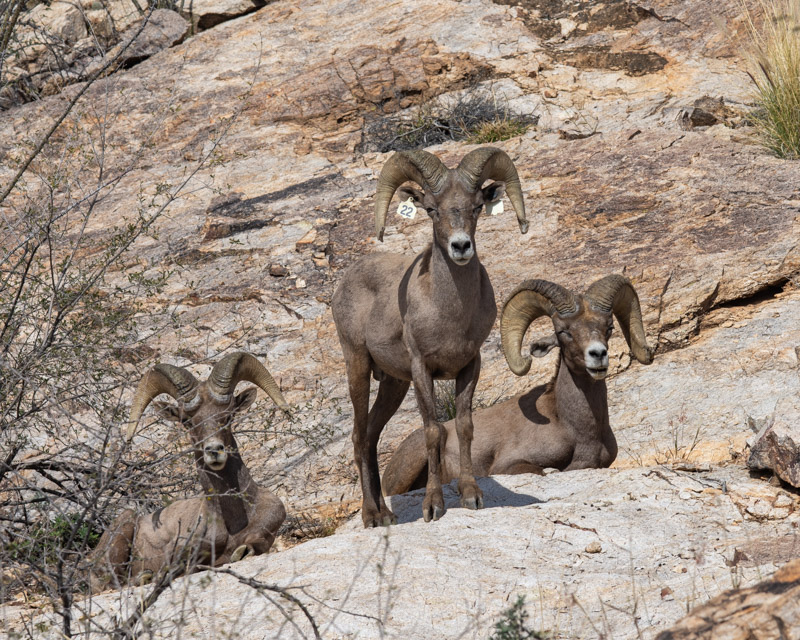
A close-up of two of the rams shows the one on the right smiling (probably chewing) with one bit of grass hanging from his lower lip. They were looking into the sun so they had to squint.
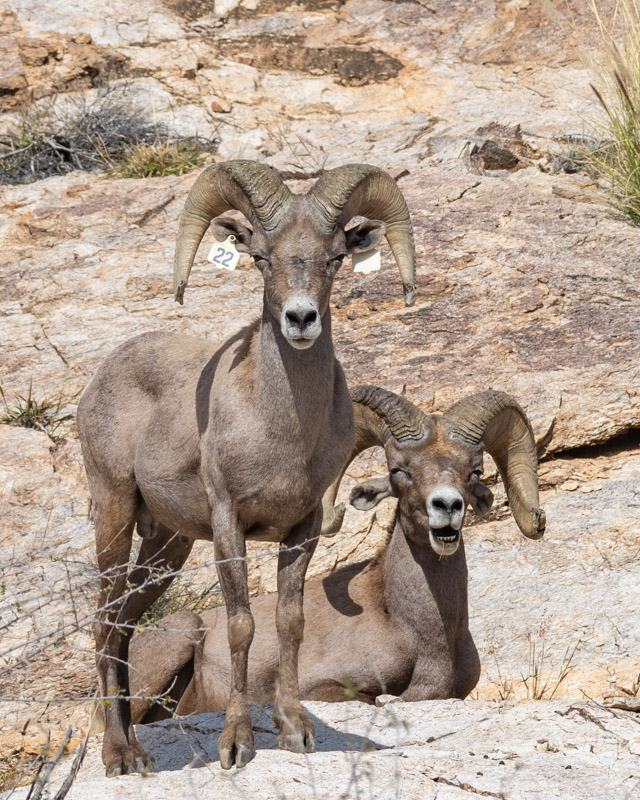
Another large ram was resting nearby. His face is blurred by grasses between him and me. Bighorn sheep rams start growing their horns at birth and continue to grow their horns throughout their lifespan. They do not shed their horns like deer and elk do. A large ram’s horns can weigh 30 pounds or more- more than all of the bones in his body combined. This ram, purple 33: “He was a 2 year old ram, when he was captured in the Plomosa Mtns in Nov 2016, West of Phoenix/North of Yuma”. So now he is four years old.
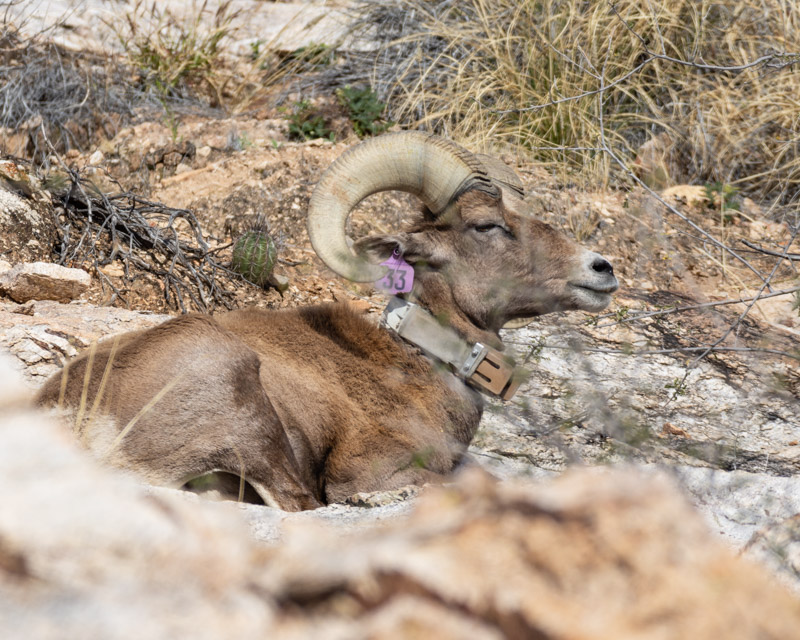
Back to the first sheep I pictured. Standing next to her was another ewe wearing a collar. Although I never got a shot in which I could see the collar number, based on the color, Game and Fish was able to ID her and provide a fascinating history.
“Her story is most interesting: We only have two collared sheep left with purple ear tags from that capture (we collared fewer that year, and some of them have not survived), and one is a ram (Dan’s photo above), so I can tell you that this ewe was approximately 3 years old when captured, came from the Plomosas also, and is number 29. Fun fact about this ewe: the spring after her release, she high-tailed it to the Rincons, and stayed there for about a year and a half before returning to the rest of the herd in July of last year! She’s one tough cookie.”
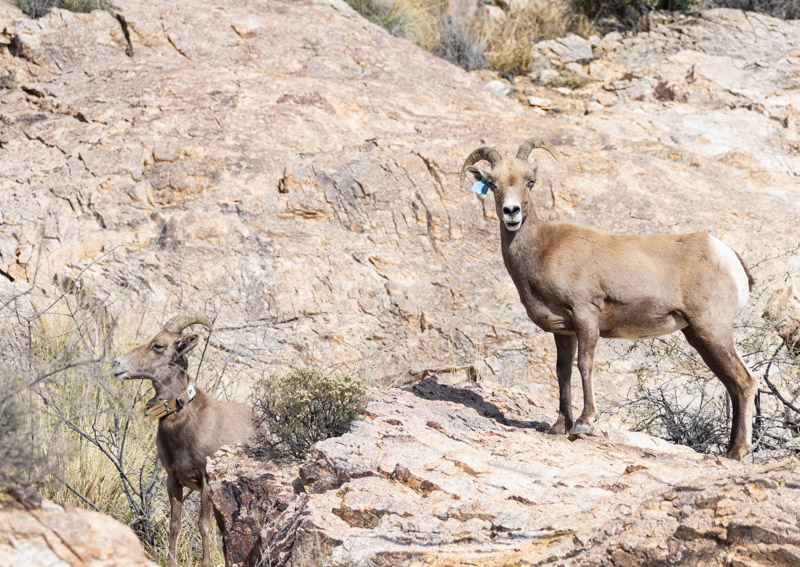
I felt very lucky coming across this small group. It is good to know Bighorn Sheep once again successfully populate the Catalina Mountains.
For more on Bighorn Sheep, the Desert Museum offers some information:
http://www.desertmuseum.org/books/nhsd_hooved.php
